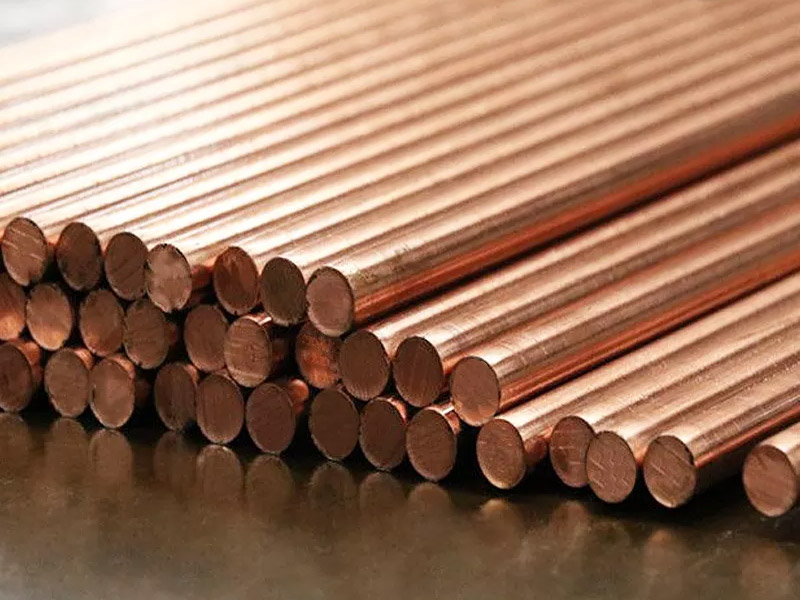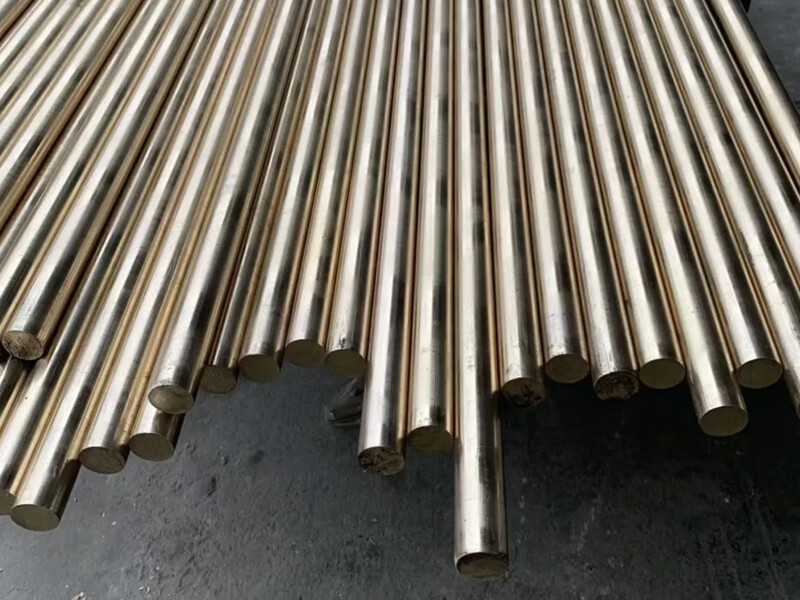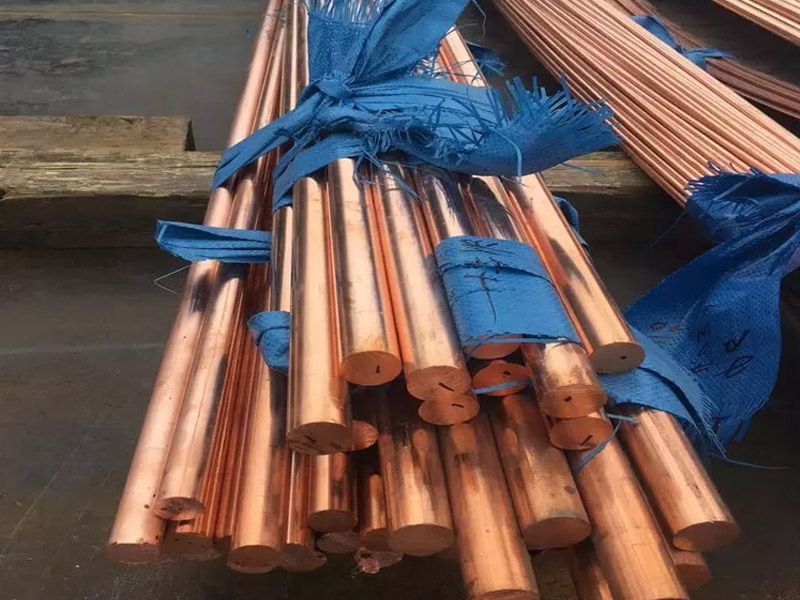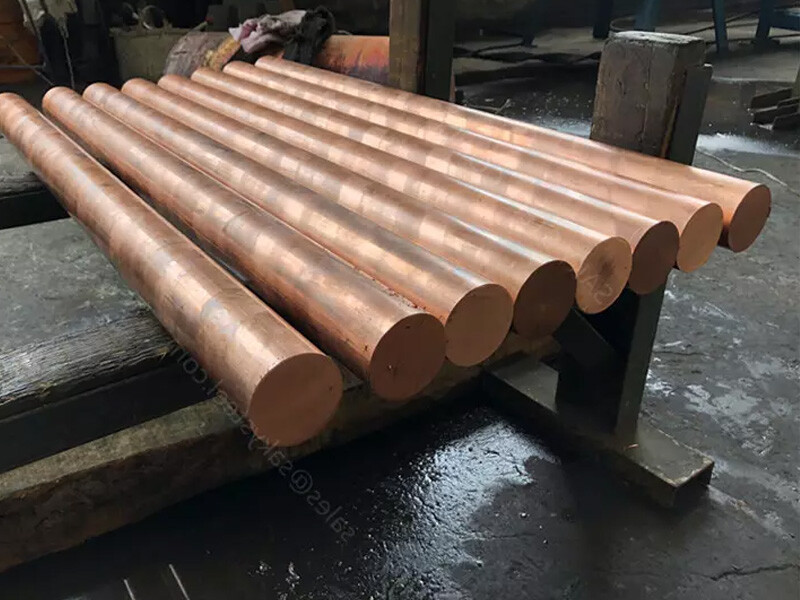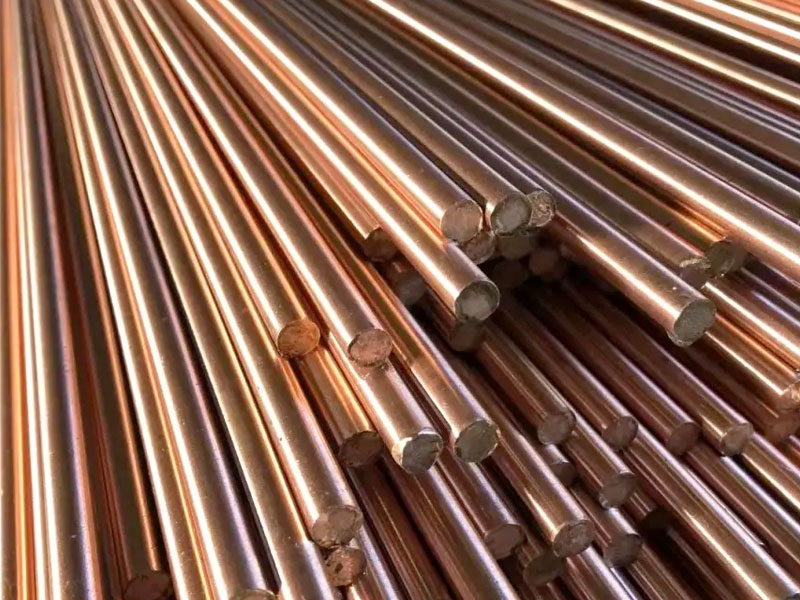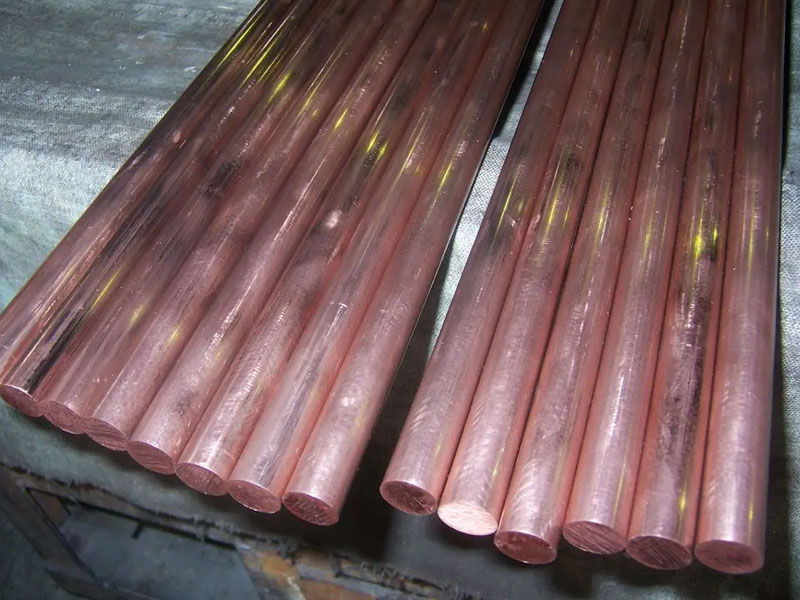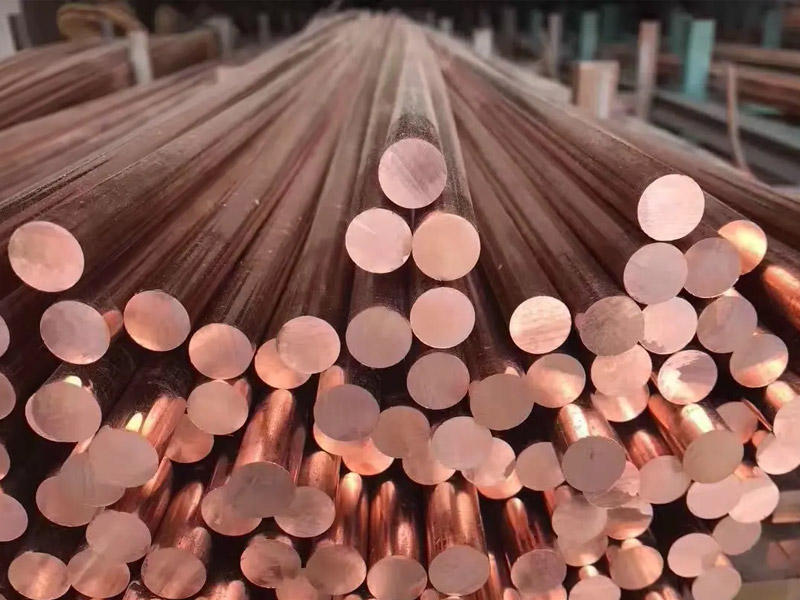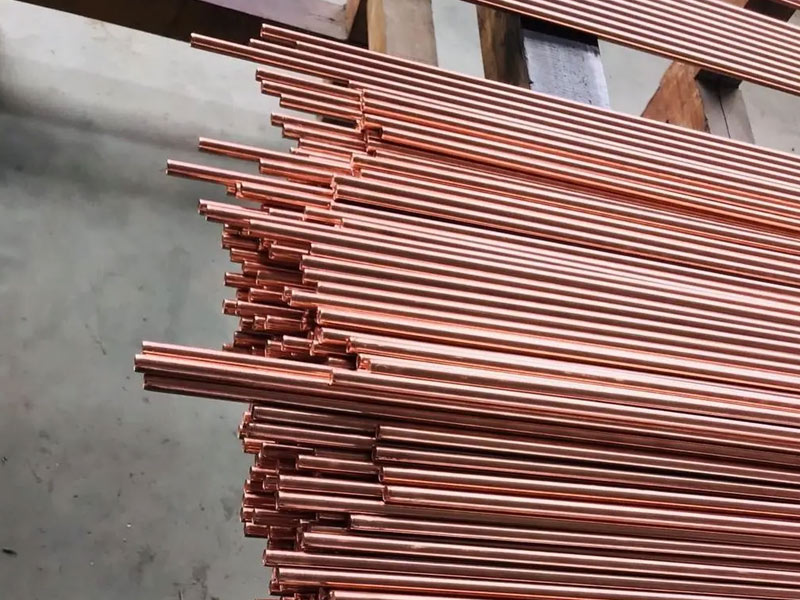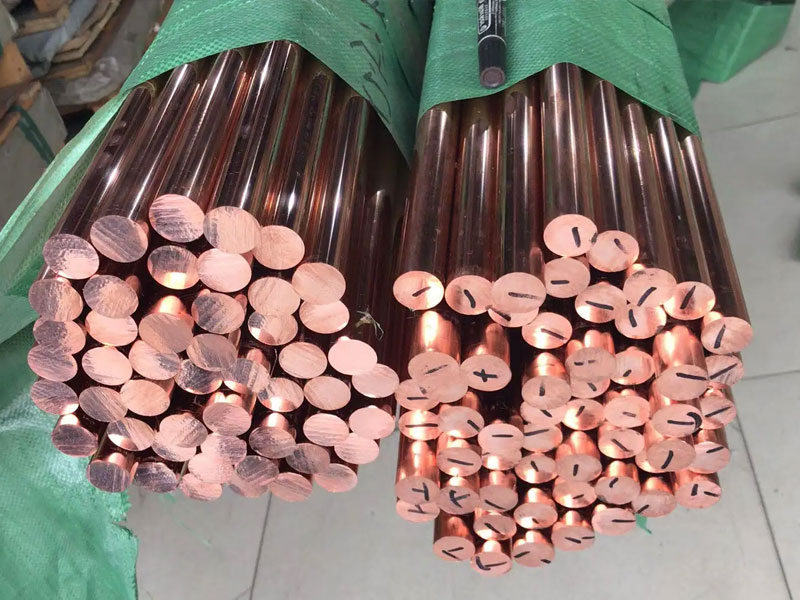98.3% Cu, 1.0% Ni, 0.5% Pb, and 0.2% P .
Key properties include high corrosion resistance, excellent electrical conductivity (≥50% IACS), high tensile strength, machinability, and resistance to stress relaxation due to precipitation hardening . The dispersed nickel phosphide phase and lead content enhance strength and workability while maintaining conductivity .
C19140 rods are available in round, square, hexagonal, or octagonal cross-sections, produced via drawing or extrusion. While exact dimensional ranges vary by manufacturer, the following standards govern tolerances and specifications:
EN 12164:2016 (European Standard):
- Specifies nominal dimensions and tolerance classes for free-machining copper alloy rods.
- For round rods, tolerance classes A (tight) or B (standard) define permissible deviations .
- Nominal diameters typically range from 3 mm to 120 mm, though custom sizes are available .
ASTM B187/B187M:
- Covers copper rods for electrical and general applications, with tolerances based on diameter and cross-sectional shape .
JIS H 3250:
- Japanese standard for extruded copper alloy rods, specifying preferred diameters (e.g., 5–150 mm) and length tolerances .
Key Tolerances (EN 12164:2016 Examples):
Note: Specific dimensions (e.g., length, diameter) are often customized per application requirements .
International Standards
C19140 rods comply with the following standards:
- UNS (Unified Numbering System): C19140 .
- European Standards:
- EN 12164:2016: Rods for free machining purposes .
- DIN 17666: Material designation CuNi1Pb0.5P .
- ASTM (U.S.):
- ASTM B187/B187M: General and electrical-grade copper rods .
- JIS (Japan):
- JIS H 3250: Extruded copper alloy rods .
Key Standard Requirements:
Detailed Chemical Composition of C19140 Copper Alloy
C19140 (UNS C19140), also known as CuNi1Pb0.5P, is a low-leaded nickel-copper alloy classified under precipitation-hardened alloys. Its chemical composition is critical for achieving its unique mechanical and electrical properties. Below are the nominal and allowable ranges of its key elements:
Key Observations:
- The alloy’s hardening mechanism relies on the Ni-P interaction, forming dispersed Ni₃P precipitates during heat treatment.
- Lead (Pb) is intentionally added to improve machinability, making it suitable for precision components like connectors and pins.
C19140 exhibits exceptional mechanical properties due to its precipitation-hardening and optional cold-working processes. Below are the typical mechanical performance metrics under different temper conditions (e.g., aged, cold-worked):
1. Basic Mechanical Properties
2. Stress Relaxation and Fatigue Resistance
- Stress Relaxation Resistance: Excellent retention of clamping force under prolonged stress, critical for electrical connectors.
- Fatigue Strength: Superior cyclic loading performance due to fine precipitates.
3. Effect of Heat Treatment and Cold Working
- Precipitation Hardening: Aging at 400–500°C precipitates Ni₃P, significantly increasing strength.
- Cold Working: Further enhances tensile strength (e.g., H temper: TD04 increases UTS by ~20%).
4. Comparative Advantages Over Beryllium Copper
- Cost-Effectiveness: ~30–50% lower cost than Be-Cu alloys. ()
- Electrical Conductivity: ~50–55% IACS (aged condition), higher than most high-strength copper alloys.
C19140 copper rod production process
1. Raw material preparation and smelting
Raw material selection: mainly high-purity electrolytic copper (content ≥ 99.5%), with alloy elements such as nickel (0.80-1.20%), lead (0.40-0.80%), and phosphorus (0.15-0.35%) added.
Smelting: Use electric furnace or submerged furnace to smelt at a high temperature of 1200-1400℃, and add slag remover (such as charcoal) to remove impurities to ensure the purity of the molten liquid. Composition detection is required during the smelting process, and alloy elements are supplemented when necessary.
2. Casting molding
Continuous casting process: The mainstream adopts the upward continuous casting method to continuously draw the molten copper liquid through the crystallizer. This process achieves efficient solidification and microstructure optimization by controlling the cooling water temperature (inlet water ≤ 30℃, outlet water ≤ 45℃) and liquid level height (± 20mm error).
Traditional casting: Some companies use casting models, and the copper liquid is cooled to form a rough billet, but the efficiency is low.
3. Hot and cold processing
Rolling/extrusion: Through the hole rolling or forward extrusion process, the diameter of the copper rod is adjusted and the surface finish is improved. The initial tensile strength can reach 376MPa.
Drawing: Further reduce the diameter and increase the strength. The tensile process increases the yield strength to 746MPa while maintaining an elongation of 13%.
4. Heat treatment and surface treatment
Aging hardening: Artificial aging (such as Ausaging or Q+T process) is carried out after solution treatment to promote the precipitation of second phases such as nickel phosphide (Ni3P), significantly improving the hardness (Brinell hardness 414HBW) and stress relaxation resistance.
Annealing: Eliminate cold working stress and improve plasticity. The annealing temperature is adjusted according to process requirements.
Surface treatment: Use pickling, polishing or oiling process to prevent oxidation and improve aesthetics.
5. Inspection and finishing
Non-destructive testing: including ultrasonic flaw detection and chemical composition spectral analysis to ensure that there are no internal defects.
Finishing: Straightening and cutting to standard size (such as diameter 0.01-1000mm), packaging and shipment.
Product advantages of C19140 copper rods
1. Excellent mechanical properties
High strength: yield strength 746MPa, tensile strength 376MPa, far exceeding ordinary brass (such as H62 yield strength ≤240MPa).
High hardness: Brinell hardness 414HBW, excellent wear resistance, suitable for high friction environment.
Good plasticity: elongation 13%, fracture surface shrinkage 24%, taking into account strength and formability.
2. Excellent physical properties
Electrical conductivity/thermal conductivity: electrical conductivity ≥50% IACS (International Annealed Copper Standard), thermal conductivity 146 Btu/(ft²·hr·°F), suitable for electrical components and heat exchangers.
Thermal stability: thermal expansion coefficient 9.8×10⁻⁶/°F (77-212°F), elastic modulus 18,000ksi, good dimensional stability at high temperature.
3. Corrosion resistance and fatigue resistance
Corrosion resistance: The synergistic effect of lead and phosphorus elements has significant corrosion resistance in humid or sulfur-containing environments, and the service life is more than 30% longer than that of ordinary copper alloys.
Fatigue resistance: High fatigue limit, suitable for automotive or aviation parts with frequent vibration.
4. Processing and cost advantages
Easy cutting: The addition of lead (0.4-0.8%) improves cutting performance, reduces tool wear, and increases processing efficiency by 20%.
Cost-effectiveness: Compared with similar high-strength copper alloys (such as beryllium copper), C19140 material costs are reduced by about 40%, and no complex plating treatment is required.
5. Wide range of applications
Electronic and electrical: connector pins, relay contacts, coaxial cable contacts, relying on its high conductivity and arc resistance.
Automotive industry: engine sensor terminals, brake system components, resistant to high temperatures and vibrations.
High-end manufacturing: aerospace fasteners, ship valves, outstanding resistance to seawater corrosion.
Q1:Do you provide samples? Is it free or extra?
A1:Yes, we can provide samples free of charge and the customer will pay the freight.
Q2:What if I don't have export experience ?
A2:We have reliable forwarder agent which can ship items to you by sea/air/Express to your doorstep. Any way, we will help you choose the most suitable shipping service.
Q3:How long is your lead time?
A3:If it is in stock, it is usually 5-10 days. Or, if there is no inventory, 15 days, depending on the quantity.
Q4:What are your terms of payment?
A4:30% T/T deposit in advance, 70% T/T balance within 5 days after B/L copy, 100%.Irrevocable L/C at sight, 100% Irrevocable L/C after receive B/L 30-120 days, O/A.
Q5:How is your technical support?
A5:We provide lifetime online support through Whatsapp/ Skype/ Wechat/ Email. Any problem after delivery, we will offer you call anytime.
Welcome To Your Inquiry
What can we help you?
RELATED PRODUCTS

